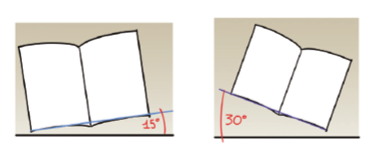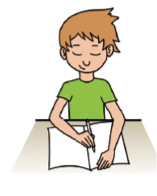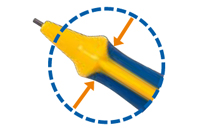Common handwriting problems
Learning to write is a complicated process
Problems observed most frequently include:
The angle of the paper

The position of the page on the table is an essential first step, says the psycho-motor therapist, Philippe Kostka. Even before working on the correct way to hold a writing instrument, a child must be in the right position in front of the paper. If the sheet is placed straight in front of the child on the table, the elbow will be against the torso, restricting the natural left to right movement of the hand. If the paper is slightly offset, however, the child will have complete freedom of movement, making it more difficult to accurately form letters and shapes
Field of vision

When writing, the field of vision is very important; children need to see the tip of the writing instrument and its point of contact with the paper. If a child’s fingers are placed too close to the tip, it will be more difficult to write accurately. It is also essential to make a visual check while writing, which helps the child to remember the letters, and more able to correct the line they are creating if necessary. This bad habit can also lead to other consequences, such as poor back posture and muscle fatigue.
The writing instrument

The writing instrument plays a key role in learning to write. There are several points to be considered. Firstly, the psycho-motor therapist, Philippe Kostka suggests that writing instruments for young children should have a fairly large diameter to help the child grip; the most suitable size for the small hands of four to eight year olds is between 8mm - 11 mm. Comfort is an equally important factor, to provide the user with enough freedom of movement. Experts have shown that there are many writing instruments suitable for young children available today, which are very user-friendly.

